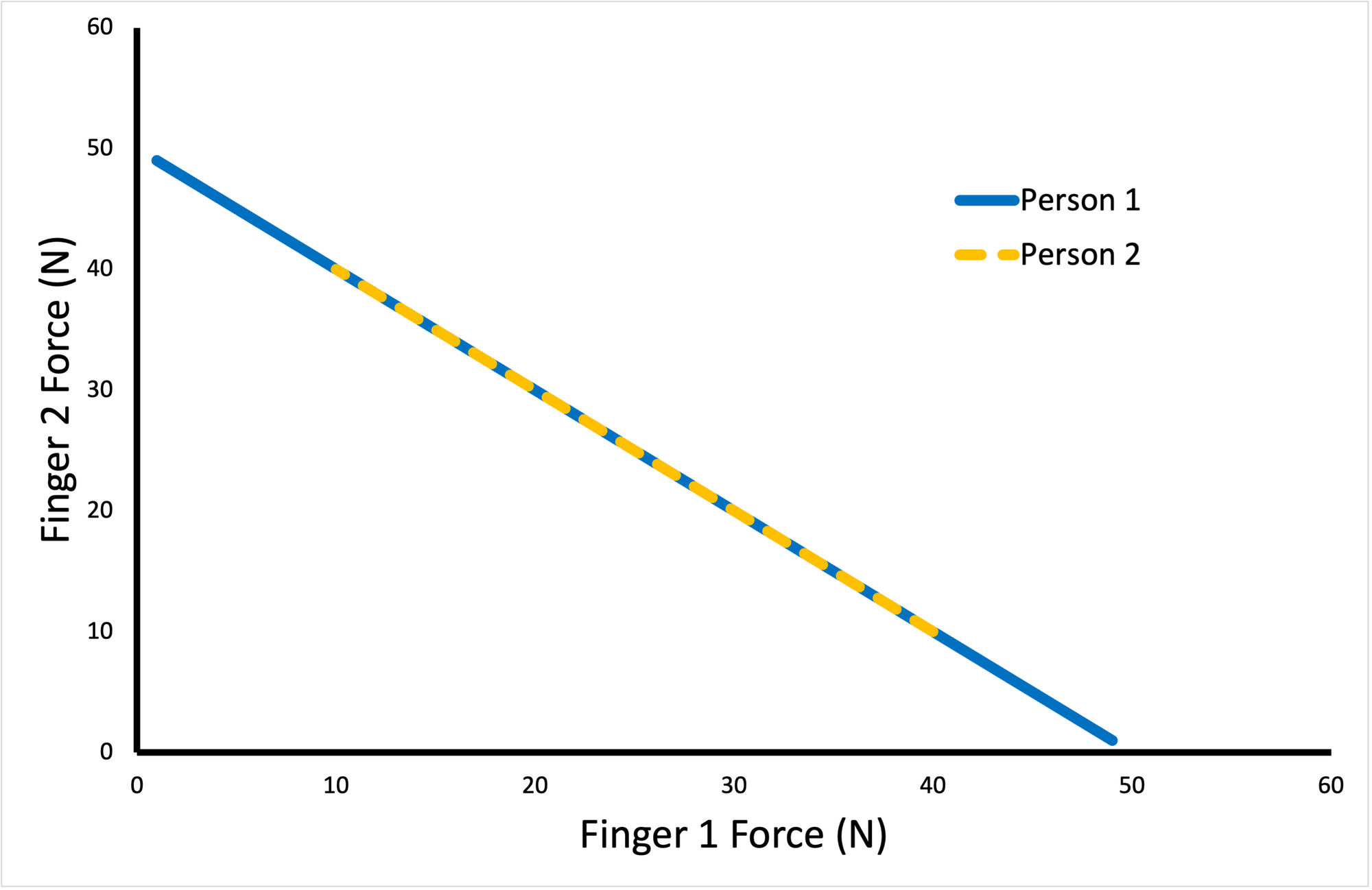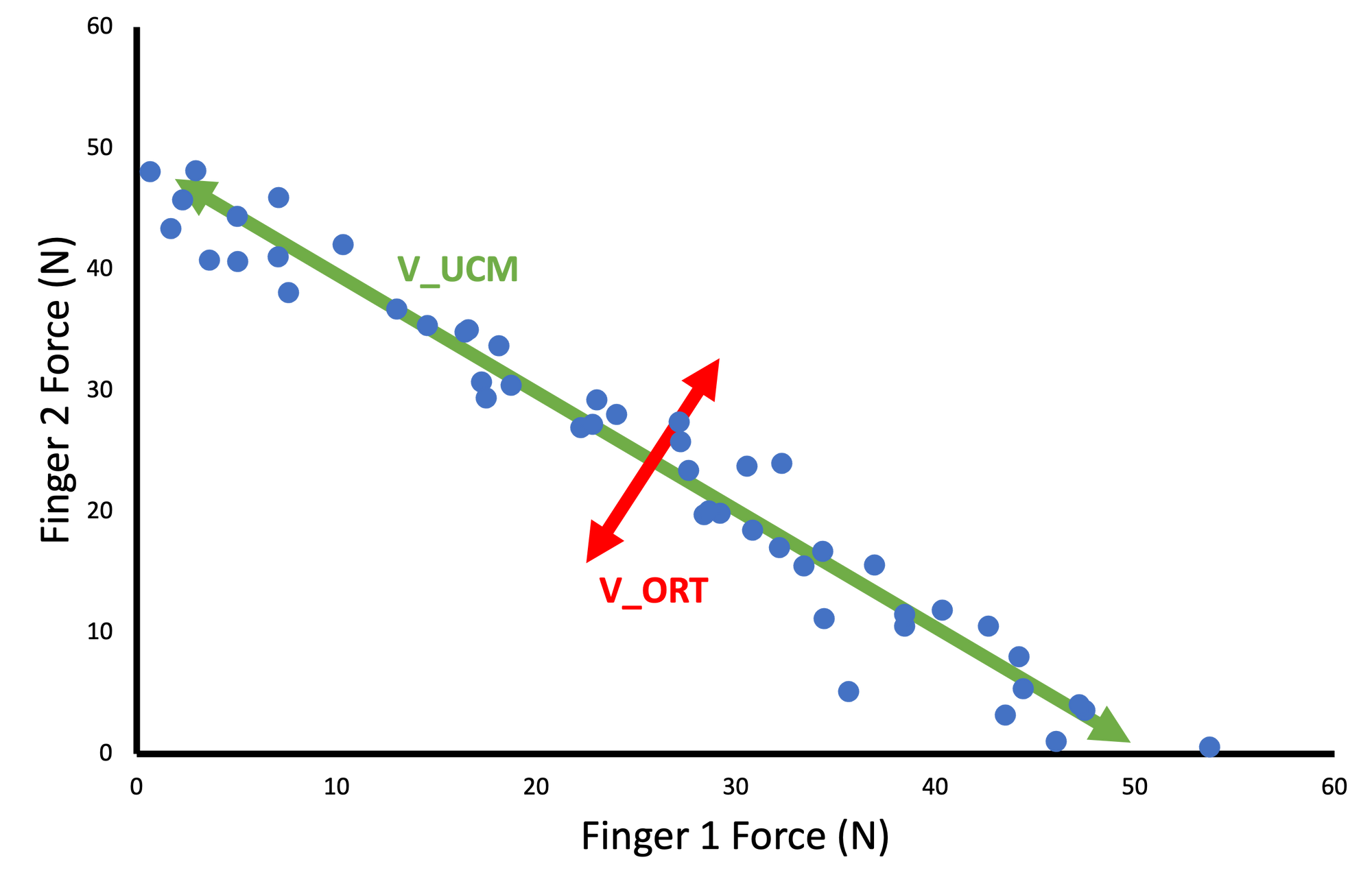Focus of attention & structure of movement variability, shuffling the deck, and being present
📝 Weekly paper summary
Context
Similar paper from previous newsletters:
A large body of literature assesses the differences in performance when adopting an external versus an internal focus of attention. An external focus of attention directs attention to the effects of one's movements, whereas an internal focus of attention directs attention to the details of one's movements. However, relatively less literature exists assessing the impact of these different foci of attention on coordination strategies.
Movement is inherently variable, and more recent motor control theories have emphasized the functional nature of movement variability rather than assuming it to be "error" or "noise." Specifically, movement variability provides systems with the capacity to adapt to changing constraints and perturbations, promote creativity, enhance learning rates, and perhaps even reduce the risk of injury.
Previous newsletter summaries have provided examples using vector coding to quantify movement variability (see above). However, another way of quantifying movement variability is to partition it into performance-irrelevant and performance-destabilizing components using Uncontrolled Manifold (UCM) analyses. A classic example to illustrate this analysis is shown below with a finger pressing task:

Assume the task goal is to press with both fingers so that the sum of the forces equals 50N. Therefore, the straight line across all solutions where the sum of Fingers 1 and 2 is 50N represents the performance-irrelevant, or uncontrolled, manifold (i.e., V_UCM). As outlined in Scholz and Schöner's seminal paper (1999), it's called an uncontrolled manifold since "the control of joint combinations within this manifold is unnecessary, i.e., they do not affect the task variable's position." (pg. 291). In this specific example, Person 1 has a larger V_UCM than Person 2, suggesting they have more potential movement solutions to satisfy this task and have more capacity to adapt to changing constraints and perturbations.
However, in most cases, people don't perform a task perfectly (due to noise in the perceptual and neuromuscular systems, "incorrect" exploration of different movement patterns, etc.), and thus not all of their variability is purely "along the manifold." Presented below is a more realistic case of what we'd measure:

The variability in the sum of Finger 1 and 2 forces that result in anything other than 50N is orthogonal to the manifold (i.e., V_ORT). To be consistent with the terminology presented in this paper, performance-irrelevant components = V_UCM and performance-destabilizing components = V_ORT.
Although this example uses finger forces to illustrate the UCM concept, the general idea can be extended to other kinematic data and links very nicely to Bernstein's Degrees of Freedom problem (the math gets a little more sophisticated though, which you can read more about in Scholz and Schöner's paper). In exercise-related contexts, we refer to the many ways people can coordinate their limbs as "movement solutions." Given that humans are blessed with motor abundance (i.e., multiple ways of solving movement problems), the UCM analyses provide a direct way of assessing how joints co-vary to stabilize a performance outcome (i.e., quantifying a synergy).
To tie this back to previous paragraphs, a larger V_UCM (i.e., increased exploitation of redundancy) allows for increased adaptability to constraints and perturbations, increases the learning rate, and reduces the risk of injury without disrupting the performance. Since prompting an internal focus of attention is proposed to overly constrain the movement system (see the constrained action hypothesis outlined in the newsletter summary above), this study's purpose was to assess if the partitioning of movement variability in the lower extremity changes with an internal versus an external focus of attention during a single-leg hopping task. The authors hypothesized that adopting an external focus of attention would result in greater V_UCM (i.e., performance-irrelevant variability) and similar, or less, V_ORT (i.e., performance-destabilizing variability).
The authors used two essential variables (the variables to be stabilized; analogous to the total force in the finger pressing example above) for their analysis: vertical limb length (the vertical position of the hip joint center from the floor) and leg orientation (the angle between the vertical and horizontal limb length). The researchers quantified vertical limb length since they proposed that more consistent vertical limb length control is a kinematic proxy for leg stiffness and indicative of more efficient hopping. They quantified leg orientation since it influences the center of mass position relative to the base of the support. Therefore it must be stabilized to ensure vertical hopping and maintaining balance. In this study, the elemental variables (the variables allowed to co-vary to stabilize the essential variables; analogous to Fingers 1 and 2 in the finger pressing example) were the ankle, knee, and hip angles.
Correctness
The study used a decent sample size (35 participants); however, they ranged between 23-55 years old. Given that the age of people can influence the V_UCM and V_ORT across various tasks, these findings should be considered with these sample characteristics in mind if working with younger people/athletes.
The authors also acknowledged that their internal focus of attention instruction ("please hop in place; focus on your toe landing in the same place every time") may have invoked an external focus of attention by saying "in the same place." Another limitation not mentioned in the paper is that the authors provided little detail about the biomechanical modelling procedures used.
Contributions
- An external focus of attention resulted in less stable movement synergies for leg orientation. The authors proposed this reflected increased flexibility in the system to correct unintentional drift when hopping. Further, an external focus of attention resulted in a more stable vertical leg length synergy. The authors proposed this reflected increased robustness for hopping efficiently.
- Both an internal and external focus of attention resulted in larger V_UCM for controlling vertical leg length throughout the stance of the hop relative to the control (but no difference between foci of attention).
- During takeoff, an external and an internal focus of attention increased V_ORT relative to the control (but again, no difference between foci of attention) when controlling leg orientation and vertical leg length.
- When computing an index of motor abundance (IMA), which is essentially a ratio between the V_UCM and V_ORT (values >1 mean that the synergy is stabilizing that particular essential variable), the hops with an external and an internal focus of attention had smaller IMAs relative to the control instruction at takeoff and landing when controlling leg orientation. However, the hops with an external focus of attention had a larger IMA than with an internal focus of attention for leg length stabilization.
🧠 Fun fact of the week
There are more ways to shuffle a deck of cards than there are atoms on the earth! I think it's relatively intuitive that there are many ways to shuffle a deck of cards, but the number of permutations is enormous!

🎙 Podcast recommendation
This podcast is a good listen whether you are building new habits for yourself or your clients! Although not identical, there are a lot of parallels between what James Clear discusses and current motor learning theory that was interesting to unpack.
🗣 Quote of the week
"Hope is generally regarded as good. Fear is generally regarded as bad. To a Stoic like Hecato... they are the same - both are projections into the future about things we do not control. Both are the enemy of this present moment that you are actually in. Both mean you're living a life in opposition to amor fati [acceptance]."
- Ryan Holiday, The Daily Stoic (pg. 347)
